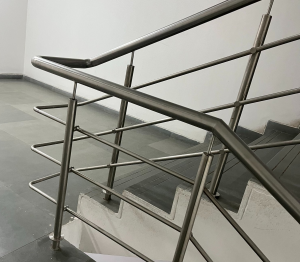The Handrail Connector: Essential Component for Seamless Railing Systems
Handrail connectors might seem like minor components in the grand architectural design scheme, but they play a critical role in ensuring the safety, stability, and aesthetic coherence of railing systems. Whether in residential, commercial, or public spaces, handrail connectors are indispensable for creating continuous, secure, and visually appealing handrails.

What is a Handrail Connector?
A handrail connector is a specialized fitting used to join sections of handrails together or to connect handrails to posts, walls, or other structural elements. These connectors come in various shapes, sizes, and materials to accommodate different types of handrails and installation requirements. The primary function of a handrail connector is to ensure a seamless and sturdy connection, providing both structural integrity and a polished appearance.
Features of Handrail Connectors
1. Material Variety:
Handrail connectors are available in a range of materials, including stainless steel, aluminum, brass, and plastic. Stainless steel and aluminum are popular choices due to their strength, durability, and resistance to corrosion.
2. Design Flexibility:
These connectors come in various designs to suit different handrail configurations. Common types include straight connectors, adjustable angle connectors, end connectors, and corner connectors. This variety allows for flexible and customized railing designs.
3. Finishes:
Handrail connectors can be finished in several ways, such as brushed, polished, powder-coated, or anodized. The choice of finish depends on the desired aesthetic and the environmental conditions of the installation site.
4. Easy Installation:
Many handrail connectors are designed for straightforward installation, featuring simple attachment mechanisms such as screws, bolts, or welds. This ease of installation makes them suitable for both professional installers and DIY enthusiasts.
Benefits of Handrail Connectors
1. Seamless Continuity:
Handrail connectors ensure that handrails form a continuous, unbroken line, which is crucial for both safety and aesthetics. This seamless connection provides a smooth surface for users to grip, reducing the risk of accidents and enhancing the overall look of the railing system.
2. Structural Integrity:
By securely joining handrail sections and ensuring a firm attachment to posts and walls, handrail connectors contribute to the overall strength and stability of the railing system. This is particularly important in high-traffic areas and public spaces where safety is paramount.
3. Versatility:
With a wide range of designs and materials, handrail connectors can be used in various applications, from residential staircases and balconies to commercial buildings and public infrastructure. Their versatility makes them a valuable component in diverse architectural projects.
4. Aesthetic Appeal:
High-quality handrail connectors enhance the visual appeal of railing systems. Whether aiming for a modern, sleek look or a more traditional style, the right connectors can complement the design and add a polished finish to the installation.
Applications of Handrail Connectors
1. Residential Buildings:
In homes, handrail connectors are used to join handrails in staircases, balconies, and terraces. They ensure safety for residents while adding to the home’s interior and exterior design.
2. Commercial Spaces:
In offices, hotels, retail stores, and restaurants, handrail connectors help create cohesive and secure railing systems. They are essential for ensuring the safety of employees and visitors while maintaining a professional and attractive environment.
3. Public Infrastructure:
Handrail connectors are crucial in public spaces such as schools, hospitals, airports, and parks. They ensure the safety and stability of handrails in high-traffic areas, providing support and security for a large number of users.
4. Industrial Settings:
In industrial environments, handrail connectors are used in catwalks, safety barriers, and platforms. Their robust construction and secure connections are essential for protecting workers in these high-risk areas.

 +86 159 6420 9667
+86 159 6420 9667  sales@haxrailing.com
sales@haxrailing.com 



